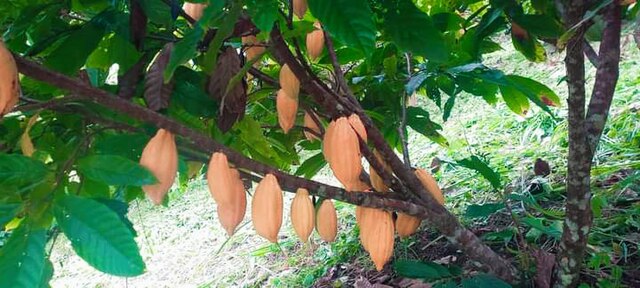Once a revered source of Indonesia’s Trinitario and Forastero cocoa varieties, West Papua province is lately witnessing a production resurgence.
West papua Now reported on February 14, 2024 how Jayapura Regency where the Grime River plies has overcome production decline by dibbling new cocoa seedlings.
Local farmers are currently utilizing disease-resistant seedlings from the regency government that can withstand the Helopeltis spp fungus. The microorganism has undermined the local cacao crop since the late 1990s.
Price Boon
With this biological means, farmers will benefit from uptick prices in the domestic market spurred by global shortage.
Prime opportunity is at hand because West African competition that had made growers abandon their crop in 2019 has ebbed considerably. Beforehand, importers had bypassed Indonesian sources for Ivory Coast and Ghana until deficit hit the two leading sources in 2023.
With the world still nursing volatility since late 2023, Indonesia’s markets including those in West Papua are cashing in. Hence, the country’s dry cocoa beans were commanding 95,000 rupiah ($5.84) a kg at the farm gate in mid-February, 2025.
Green cocoa or “wet chocolate” in commerce jargon in its part was selling at 30,000 rupiah ($1.84) a kg on farms.
Cocoa Village
One place in West Papua that is already reaping the competitive prices is Imsar hamlet in the Grime river valley.
The village has 106 homes, and almost every family operates a cocoa farm, some of which trace their roots to 1932.
Beginning 1997 however, a destructive bug that sucks the juice from budding cocoa pods all but destroyed most farmers’ plantations. The pest led to the abandonment of many farms two decades later, in 2019.
The procurement of grafting seedlings in late 2024 has nevertheless helped farmers recover harvest capacities of 40 kg per small farm.
Since their quality cocoa commands renown, growers attract a ready market via brokers from Japan who ship the cocoa abroad.
This way, the village joins the ranks of the green cocoa revolution sweeping through Indonesia, along with Ransiki sub-district. This subdistrict in West Papua has been the pioneer of the sustainable chocolate known as Ransiki 72%. And as the statistics below reveal, smallholder farmer areas like Ransiki and Imsar elevate West Papua in Indonesia’s cocoa industry.
Indonesia and West Papua Cocoa Statistics
Indonesia is the world’s third biggest cocoa-producing nation, as of 2023 at 632,117,000 kg of raw cocoa. Like other parts of the world, cocoa production in Indonesia has been declining annually since a 2019 peak of 734,795,000 kg.
Who produces cocoa in Indonesia?
According to Indonesia Investments, small-scale farmers produce over 99% of all cocoa in the country. In 2023, for instance, smallholders harvested 631,350,000 kg of beans while large private estates managed 740,000 kg. The government’s estates in their part trailed with 27,000 kg.
Which regions lead cocoa cultivation area in Indonesia?
The crown of cocoa acreage in Indonesia goes to Sumatra and Sulawesi. The two boast 80% of the country’s 1.5 million hectares of cocoa plantations.
When did cocoa production begin in West Papua?
While West Papua, along with the larger Papua, is a recognized cocoa producer, it is nevertheless more famous for its quality cocoa. Production began in the Dutch Invasion period of the 1930s but peaked in the 1950s. This is when the British Commonwealth Development Corporation cultivated 1,785 hectares of cocoa in the Ransiki sub-district. The production in this concession area alone amounted to 2,000,000 kg at its most productive period.
How big is cocoa production in West Papua?
West Papua harvested 966,000 kg of cocoa beans in 2023 while the larger Papua managed 8,837,000 kg, per the national government’s figures.
